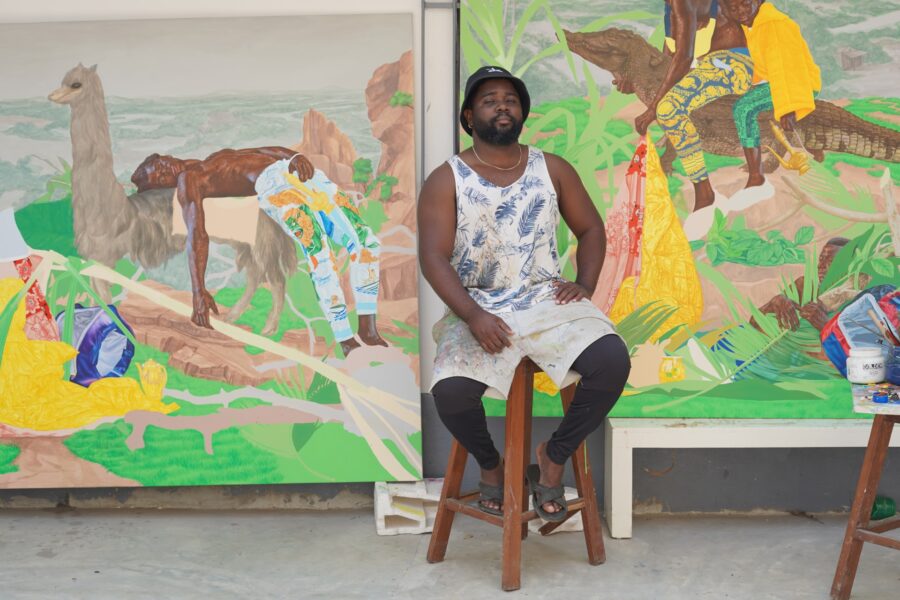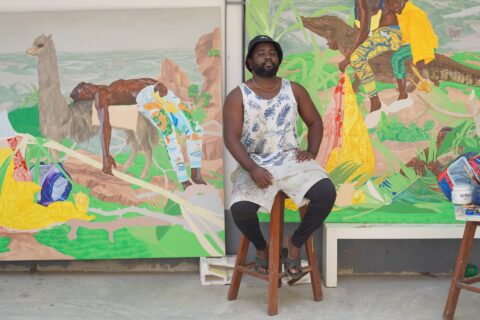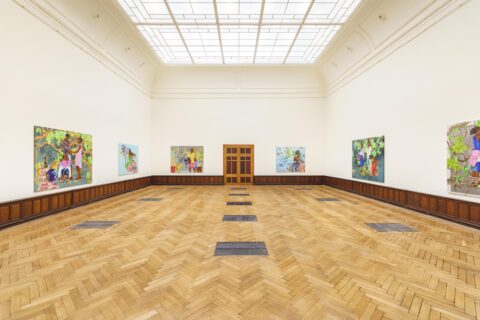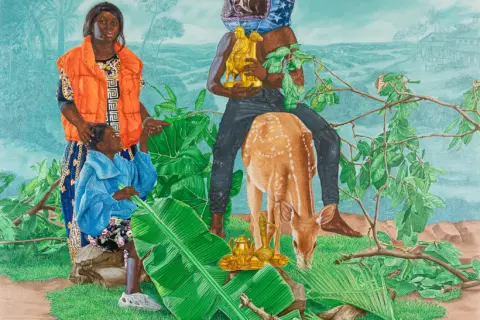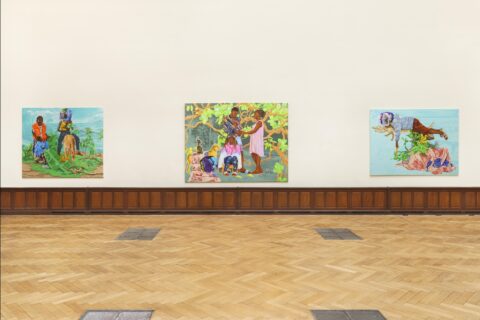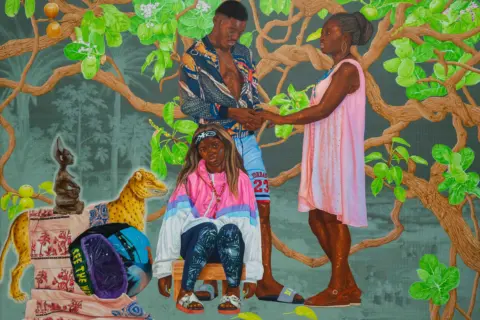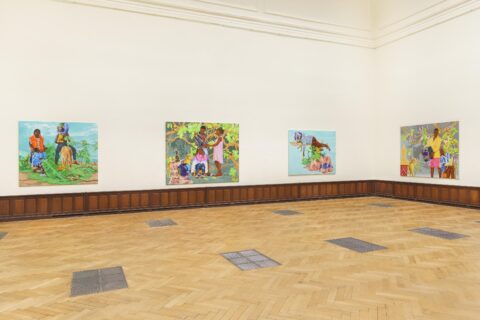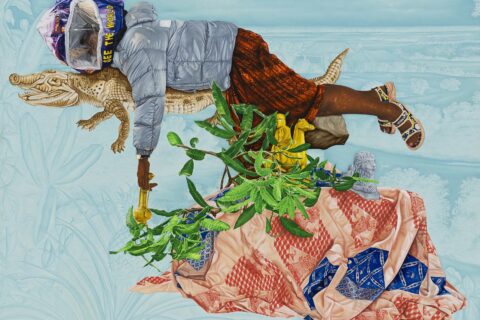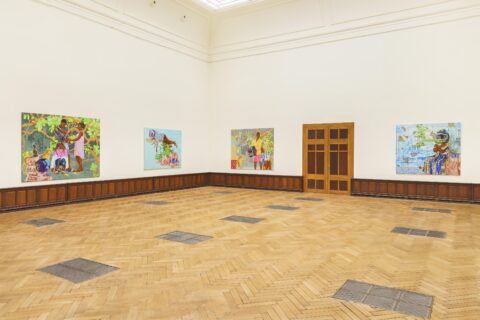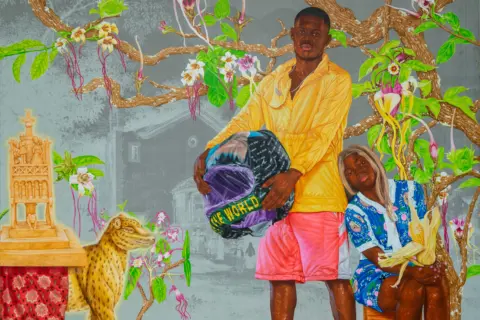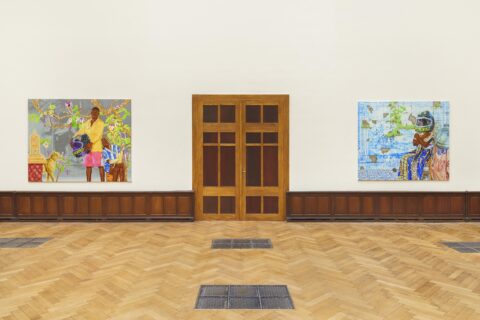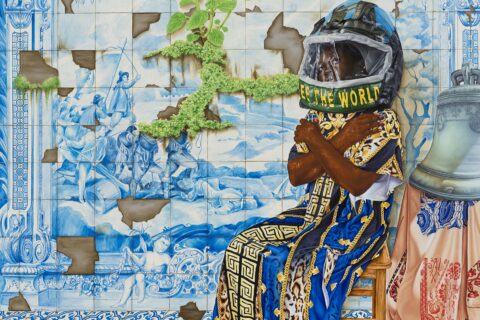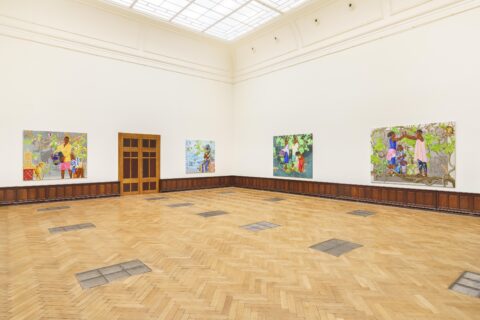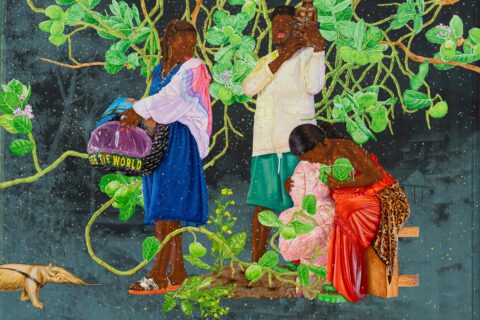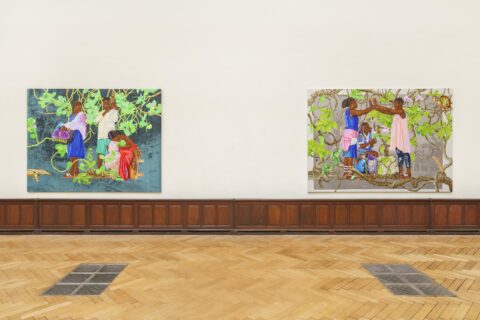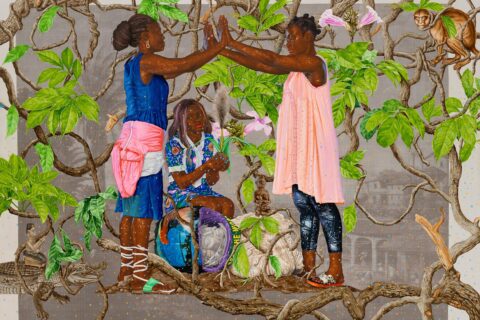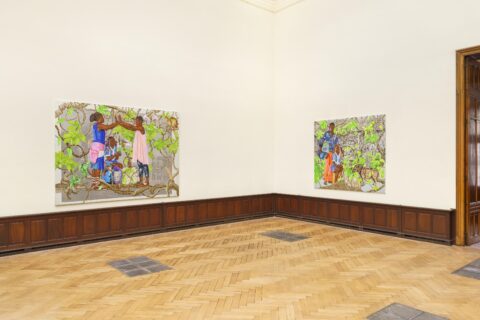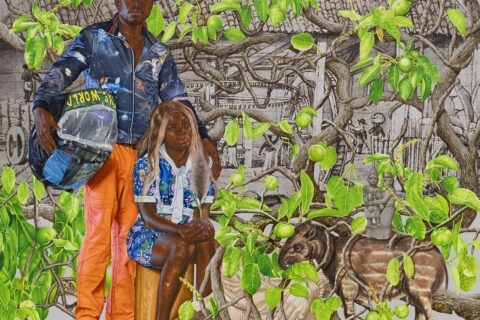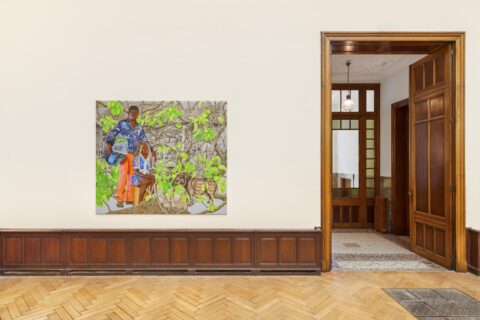Hilary Balu Merveilleuse Obscurité
22/03/2024 – 28/04/2024
Galerie Nagel Draxler and Stems Gallery @ Lempertz, Brussels
Grote Hertstraat 6/Rue du Grand Cerf
1000 Bruxelles
Opening:
Thursday March 21, 2024, 6 – 9 pm
Press Release
Hilary Balu’s new paintings are an extension of his series titled “From Fantasy to Escape,” which he began a few months ago. Through these works, the artist continues his exploration of the consequences of migratory flows, whether historical or contemporary. His approach aims to shed light on the impacts of colonialism and modern globalization. Balu’s canvases bear witness to the evolution of society from colonial imperialism to the despair of refugees who are now fleeing their inhospitable land, plagued by conflicts and economic difficulties.
At the core of the “From Fantasy to Escape” series, the artist found his inspiration by chance when he discovered photographs taken during a trip to the Yombe people in Kongo Central in 2021. He visited a former palm oil factory that once belonged to Belgium when Congo was a Belgian colony. This abandoned factory is now engulfed by nature, overgrown with lush vegetation. Balu reinterprets the plantation land- scapes immortalized by Frans Post, a Dutch painter from the 17th century whose works reflect the colonial hegemony of that era. The artist transforms these exploitation landscapes, making way for abundant and immense nature, where the power of nature is revealed in all its protective magnificence.
The Kongo ancestors possessed an in-depth knowledge of plant properties, whether related to spiritual, healing, or toxic powers. For instance, the bitter Hyssop plant, locally known as “kongo-bololo,” is used in treating malaria, sinusitis, and other illnesses, while also holding spiritual implications for protection against malevolent spirits. This plant was also used in rituals by Nganga priests to cleanse individuals of en- chantments. On the other hand, the Calotropis procera plant,locally named “Bulembe-limbu” in Kango, is highly toxic and was used by warriors and hunters to poison their targets. During the Battle of Ambwila in 1665, where the Kongo kingdom faced off against Portugal, these plants were employed by Kongo warriors to poison arrows and combat the Portuguese.
Balu’s paintings also pay homage to the constitutional principles of the Kongo tradition embodied in the proverb "Ekongo Inzambi kwandi kanvila muntu nlenda kungandako evokundilisa" (A Kongo individual is a divinity; no one can make them cry or mistreat them). This principle finds embodiment in the “Ntadi” or “Mintadi” sculptures, guardians of royal tombs and symbols of Kongo prestige. These sculptures defy dis- torted historical representation, asserting the importance of Kongo royalty as protectors of their people. A vivid tribute to the kings, these sculptures remind us of the protective roles they played within society. The iconic image of a mother nursing her child is the most well-known example. For the artist, these sculptures constitute a powerful assertion, countering the West’s imposed version of the slavery narrative, claiming that “Kongo kings and notables sold their brothers and cousins for trinkets”. This declaration is a form of resistance demonstrated by these kings toward their populations.
Through this series, Balu juxtaposes two forms of adventure: the colonial journey experienced by Frans Post in 17th-century Brazil, and the contemporary adventure of migrants forging their way through the Brazilian forest, seeking survival as their path leads them to the United States. It’s also a relationship of alterity between the West and Africa, persisting through the fantasy the West holds for Africa and the illusion Africans harbor regarding the West.
